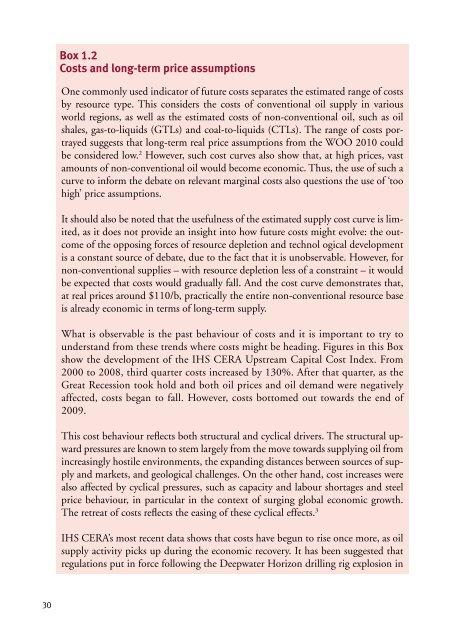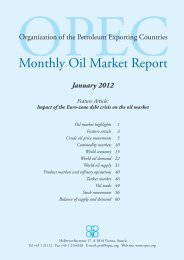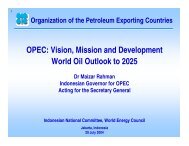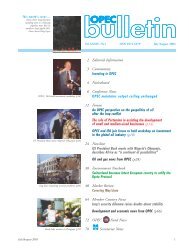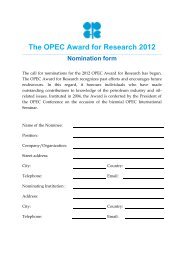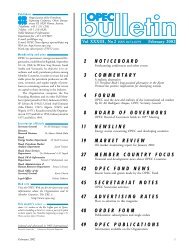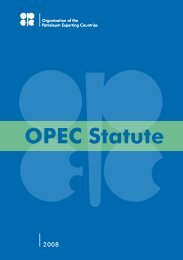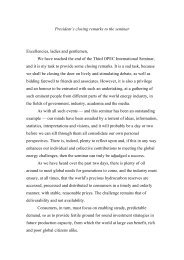Section One
Section One
Section One
You also want an ePaper? Increase the reach of your titles
YUMPU automatically turns print PDFs into web optimized ePapers that Google loves.
30<br />
Box 1.2<br />
Costs and long-term price assumptions<br />
<strong>One</strong> commonly used indicator of future costs separates the estimated range of costs<br />
by resource type. This considers the costs of conventional oil supply in various<br />
world regions, as well as the estimated costs of non-conventional oil, such as oil<br />
shales, gas-to-liquids (GTLs) and coal-to-liquids (CTLs). The range of costs portrayed<br />
suggests that long-term real price assumptions from the WOO 2010 could<br />
be considered low. 2 However, such cost curves also show that, at high prices, vast<br />
amounts of non-conventional oil would become economic. Thus, the use of such a<br />
curve to inform the debate on relevant marginal costs also questions the use of ‘too<br />
high’ price assumptions.<br />
It should also be noted that the usefulness of the estimated supply cost curve is limited,<br />
as it does not provide an insight into how future costs might evolve: the outcome<br />
of the opposing forces of resource depletion and technol ogical development<br />
is a constant source of debate, due to the fact that it is unobservable. However, for<br />
non-conventional supplies – with resource depletion less of a constraint – it would<br />
be expected that costs would gradually fall. And the cost curve demonstrates that,<br />
at real prices around $110/b, practically the entire non-conventional resource base<br />
is already economic in terms of long-term supply.<br />
What is observable is the past behaviour of costs and it is important to try to<br />
understand from these trends where costs might be heading. Figures in this Box<br />
show the development of the IHS CERA Upstream Capital Cost Index. From<br />
2000 to 2008, third quarter costs increased by 130%. After that quarter, as the<br />
Great Recession took hold and both oil prices and oil demand were negatively<br />
affected, costs began to fall. However, costs bottomed out towards the end of<br />
2009.<br />
This cost behaviour reflects both structural and cyclical drivers. The structural upward<br />
pressures are known to stem largely from the move towards supplying oil from<br />
increasingly hostile environments, the expanding distances between sources of supply<br />
and markets, and geological challenges. On the other hand, cost increases were<br />
also affected by cyclical pressures, such as capacity and labour shortages and steel<br />
price behaviour, in particular in the context of surging global economic growth.<br />
The retreat of costs reflects the easing of these cyclical effects. 3<br />
IHS CERA’s most recent data shows that costs have begun to rise once more, as oil<br />
supply activity picks up during the economic recovery. It has been suggested that<br />
regulations put in force following the Deepwater Horizon drilling rig explosion in


